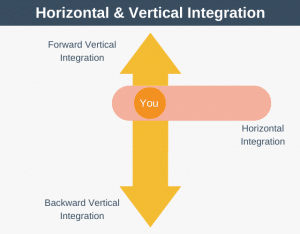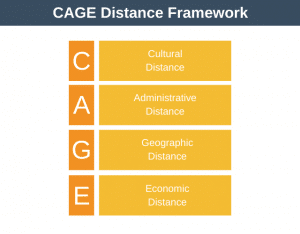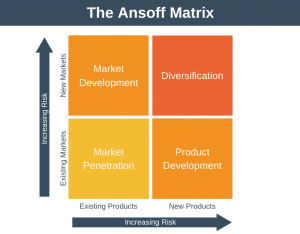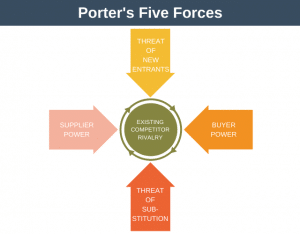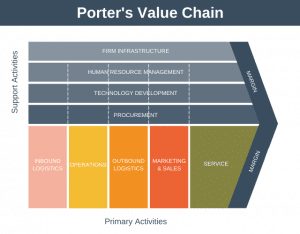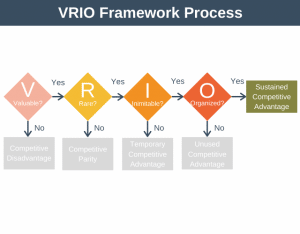To thrive in a competitive market, every business needs a clear strategy to achieve a sustainable competitive advantage over its competitors.
Put another way, your firm’s profitability is directly correlated with your chosen strategy. Porter’s Generic Strategies is a tool that can help you select a clear strategy.
While every firm needs a clear strategy to succeed, that is not to say there can’t be more than one successful strategy within an industry. For example, low-cost airlines, such as Southwest in the US and Ryanair in Europe, can be successful alongside airlines focused on luxury and personal service, such as Delta and Emirates.
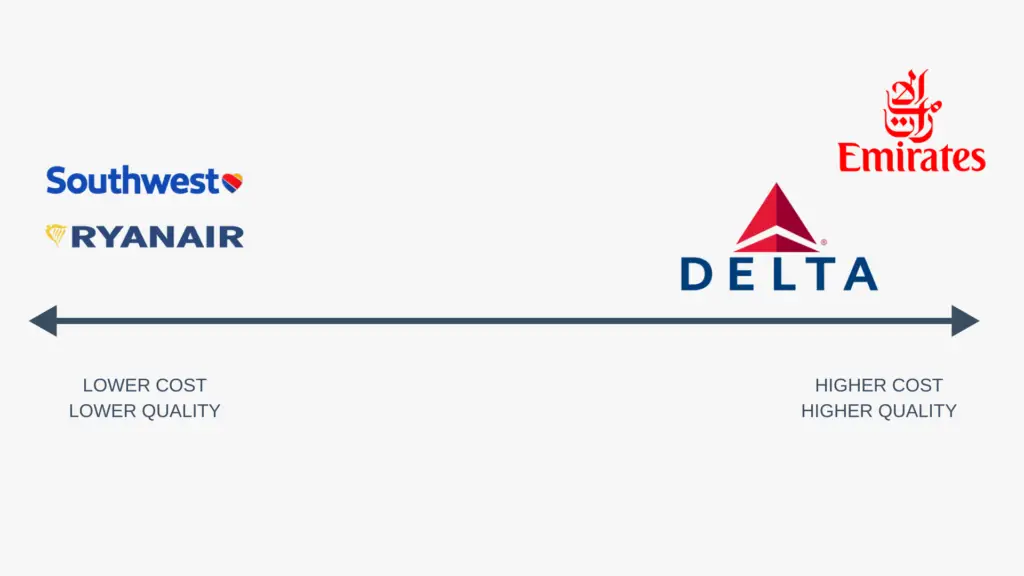
The key point here is that having a clear strategy is what’s important, not that one strategy is better than another.
Porter’s Generic Strategy
Porter’s generic strategies were laid out in the 1985 book, “Competitive Advantage: Creating and Sustaining Superior Performance,” by Michael E. Porter.
Porter says that there is only one way that firms can gain a sustainable advantage: by offering greater value than their competitors.
However, Porter says there are three mechanisms (or generic strategies) you can leverage to deliver greater value than your competitors and achieve a sustainable competitive advantage. These are:
- Cost Leadership: choosing to be the cheapest in the industry.
- Differentiation: choosing to create the most unique and desirable products in the industry.
- Focus: choosing to focus exclusively on the niche market within the industry.

One thing to note about this diagram is that you’ll usually see it drawn with a column called “low cost,” but we’ve used “lowest cost” here because it’s more accurate. You don’t win by being low-cost. You win by being the lowest cost.
To complete his model, Porter makes two additions:
- First, breaking down the Focus strategy into two parts: Cost Focus and Differentiation Focus. Cost focus means being the lowest cost provider within a niche market, while differentiation focus means being the most desirable offering within your niche market.
- Second, by showing that failing to select a strategy or trying to mix and match strategies will result in below-average profitability and strategic mediocrity, which Porter calls a stuck-in-the-middle strategy.
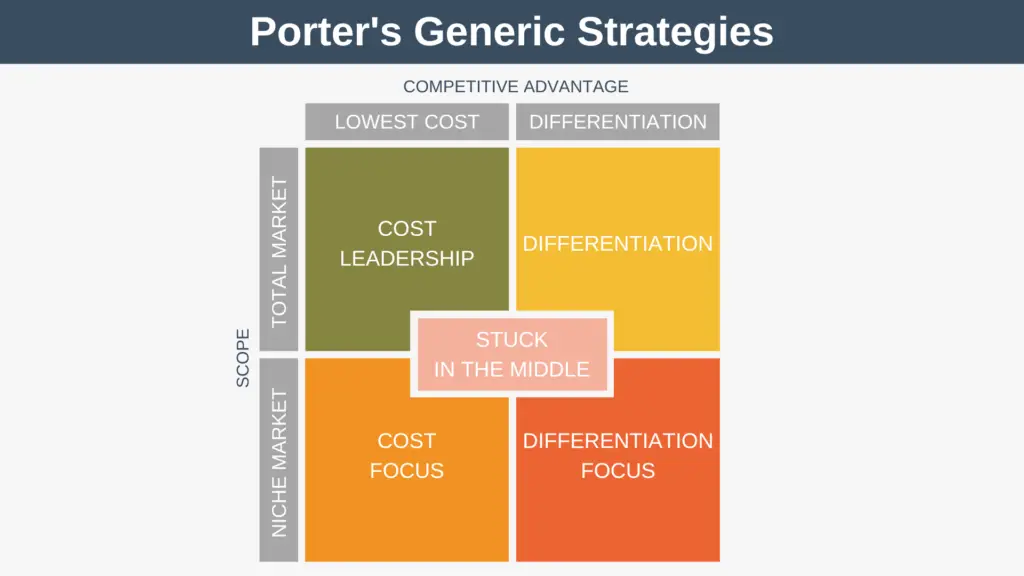
Let’s look at each part of the model in more detail.
1. Cost Leadership Strategy
With a cost leadership strategy, a firm sets out to become the lowest-cost producer within its industry.
Common ways firms go about becoming the lowest-cost provider include:
- Leveraging economies of scale.
- Creating low-cost production facilities.
- Selling a bare-bones version of a product or service.
- Employing tight cost control.
It’s important to note that a cost leadership strategy doesn’t just mean deciding to be the cheapest. That’s not enough because a similar low-cost competitor could undercut your prices to steal your customers. You must look at what you can do differently from your competitors to sustain your position as the lowest-cost producer.
It is very common for firms with a cost leadership strategy to sell a bare-bones or no-frills version of a product or service.
Cost Leadership Strategy Examples
Examples of firms with a cost leadership strategy include:
- Wallmart.
- Southwest Airlines.
- Amazon.
- Ryanair.
If you think about it for a moment, these companies sell cheaper products than their competitors. Note that although these companies are the lowest-cost operators in their industry, they are still very profitable, just as profitable as companies using a differentiation strategy.
2. Differentiation Strategy
With a differentiation strategy, a firm makes its products or services unique to stand apart from its competitors.
Common ways firms make their products and services unique include utilizing unique product features, unique branding or design, higher quality, and higher customer service levels.
Because of the uniqueness of their offering, firms with a differentiation strategy usually price their offering higher than their competitors.
Firms with a differentiation strategy often have loyal customers because of the perceived uniqueness of their products. This loyalty, in turn, reduces direct rivalry with the firm’s competitors.
Differentiation Strategy Examples
Examples of well-known firms using a differentiation strategy include:
- Louis Vuitton.
- Apple.
- LEGO.
- Harley-Davidson.
If you think about it for a moment, each of these firms offers unique products compared to their competitors.
3. Cost Focus Strategy
With a cost focus strategy, a firm sets out to become the lowest-cost producer for a specific niche within the industry.
The only difference between this strategy and Cost Leadership is that firms within this category target a narrow slice of an industry at the exclusion of all other segments.
Cost Focus Strategy Examples
Examples of well-known firms using a cost focus strategy include:
- Monster Energy.
- Sandisk.
- Netjets.
For example, Monster Energy operates in the energy drink niche of the soft drink market and aims to charge less than its most well-known competitor, Red Bull.
4. Differentiation Focus Strategy
With a differentiation focus strategy, a firm sets out to become the most unique and desirable provider for a specific niche within the industry.
The only difference between this strategy and differentiation is that firms with a differentiation focus target a narrow slice of an industry at the exclusion of all other segments.
Differentiation Focus Strategy Examples
Examples of well-known firms using a differentiation focus strategy include:
- Whole Foods Market.
- Red Bull.
For example, Whole Foods Market focuses on the niche of selling natural and organic products. Its expensive products have earned it the nickname “whole paycheck,” but a significant amount of people are prepared to pay these prices to feel good about the food they eat.
5. Stuck In The Middle Strategy
Firms that chase more than one generic strategy but fail to achieve any of them successfully are said to be stuck in the middle. They are neither inexpensive nor differentiated.
The reason why firms struggle to both differentiate and lead on cost is that differentiation is usually very expensive.
Compared to differentiators, cost leaders, and focused companies, companies stuck in the middle are competitively disadvantaged. That said, a stuck-in-the-middle company may still make satisfactory profits if the industry is particularly profitable or its competitors are also strategically stuck in the middle.
Stuck In The Middle Strategy Examples
Examples of well-known firms with a strategy that is stuck in the middle include:
- Sony.
- Sears.
If you think about the TVs that Sony sells, they’re not cheaper than other brands but neither are they any more unique that other brands.
How To Use Porter’s Generic Strategies
- If you haven’t yet entered a market, use the Five Forces Model to determine the market’s attractiveness. If you’re already in the market, you can still use the Five Forces Model to understand better the forces affecting your market.
- Conduct a SWOT analysis for each generic strategy. The idea here is to understand the pros and cons of adopting each generic approach.
- Once you’ve completed your SWOT analysis, you’re in a position to select the most appropriate generic strategy for you, which is the strategy that places you in the strongest strategic position.
Tip: You Still Need To Think For Yourself
For example, although the model suggests otherwise, it can sometimes be possible to combine strategies and not end up stuck in the middle. IKEA is an excellent example of a company that successfully combines cost leadership AND differentiation.
Ikea sells furniture designed in-house and, therefore, unique and leads on cost too, by virtue of being flat packed and other factors.
Advantages & Disadvantages
There are several advantages and disadvantages associated with Porter’s generic strategies.
Advantages
- The model shows that there is no one best strategy, with each approach being as good as another. Which one you choose will depend on your unique circumstances.
- The model helps you avoid choosing a stuck-in-the-middle strategy.
Disadvantages
- The model says that companies must focus on a single generic strategy, but as we’ve seen in the case of IKEA, this is not the case. Apple is an example of another company that has been able to demonstrate both cost leadership and differentiation.
- The model may not apply to some small firms. The tools to offer low cost and the investment to create differentiated products may be too expensive for them.
- The model suggests that a firm needs to select its strategy and get on with execution, but this isn’t always the case, and a firm needs to stay flexible to change its strategy as circumstances demand it.
To Sum Up
Porter’s generic strategies ultimately says that there is only one way that firms can gain a sustainable advantage: by offering greater value than their competitors.
That greater value can take one of two forms, either lower prices or better uniqueness, and you can apply both of these approaches to either the broad market or to a narrow niche within the market.


